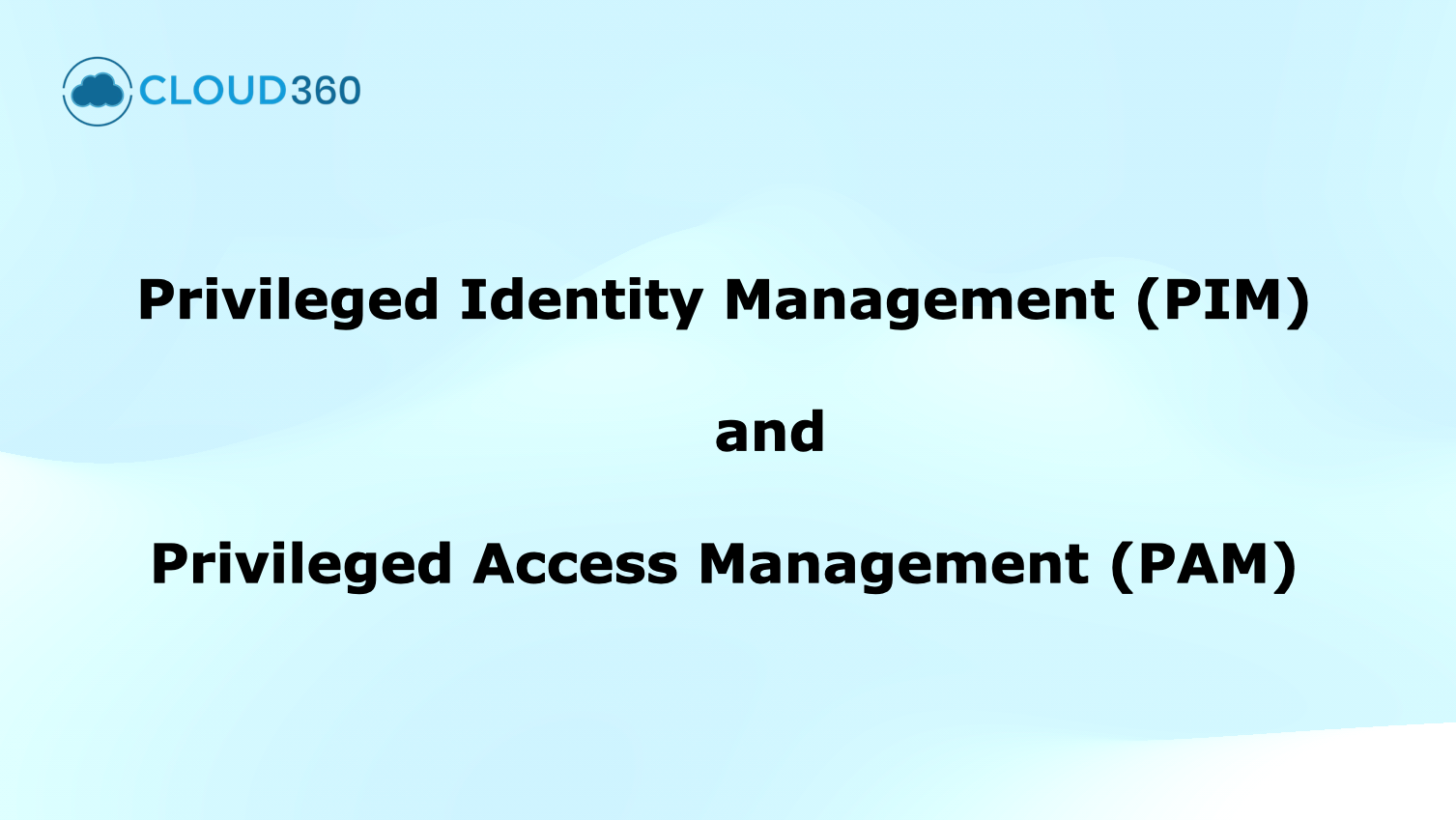Image Credit: Cloud360 Training
In today’s world of increasingly sophisticated cyber threats, protecting privileged accounts has become a top priority for organizations. Two key frameworks that help organizations safeguard these high-risk accounts are Privileged Identity Management (PIM) and Privileged Access Management (PAM). Though they are often used interchangeably, they address different aspects of security. In this article, we will explore the differences, importance, and best practices for implementing PIM and PAM.
What is Privileged Identity Management (PIM)?
Privileged Identity Management (PIM) focuses on the management and control of privileged accounts within an organization. These accounts generally have elevated rights, such as system administrators, root accounts, or service accounts, and are crucial to the functioning of an organization’s IT infrastructure.
PIM primarily deals with the identity aspect of privileged accounts. This includes tasks like:
-
Provisioning and De-provisioning: Creating and removing privileged accounts as users join or leave the organization.
-
Role-based Access Control (RBAC): Assigning specific privileges to certain users or groups based on their roles, ensuring the principle of least privilege is adhered to.
-
Identity Lifecycle Management: Managing the lifecycle of privileged identities, including modifications, reviews, and retirement of accounts.
Key Components of PIM
-
Identity Governance and Administration: Enforces policies for managing who gets privileged access and when.
-
Role Management: Ensures that only the necessary roles have access to privileged accounts.
-
Access Reviews and Audits: Conducts periodic reviews of privileged access to ensure compliance with security policies.
-
Automated Workflows: Streamlines the process of managing privileged identities through automation, reducing human error and inefficiencies.
What is Privileged Access Management (PAM)?
Privileged Access Management (PAM) is a broader concept that covers the management of access to critical systems and data by privileged accounts. While PIM deals with the identity of users who have privileged rights, PAM controls the access to the systems these users can interact with.
PAM ensures that organizations minimize the risk of privilege abuse or attacks, particularly from insiders or compromised accounts. It focuses on monitoring, controlling, and auditing the use of privileged access, enforcing strict policies to ensure that only the right individuals can access sensitive systems.
Key Features of PAM
-
Session Management and Monitoring: Tracks and records the actions taken by privileged users during a session, providing an audit trail in case of suspicious activity.
-
Just-in-Time (JIT) Privilege Elevation: Grants elevated privileges only when needed and for a limited time to reduce the risk of continuous privileged access.
-
Credential Vaulting: Secures privileged account credentials in an encrypted vault, ensuring that sensitive passwords are never exposed or stored in plain text.
-
Access Control and Enforcement: Ensures that privileged users can only access specific resources and systems necessary for their work, implementing the principle of least privilege.
The Relationship Between PIM and PAM
While PIM and PAM are distinct concepts, they work hand-in-hand to ensure comprehensive security around privileged accounts and access. PIM manages the identities of privileged users, ensuring they are appropriately granted access to the systems they need, while PAM focuses on managing and monitoring that access to ensure it’s used safely and securely.
In other words, PIM is concerned with who can access privileged accounts, while PAM is focused on controlling how those accounts are used once access is granted.
Why Are PIM and PAM Important?
1. Protection Against Insider Threats
Privileged accounts are often the target of insider threats. PIM ensures that only authorized individuals have privileged identities, while PAM ensures that their actions are monitored and controlled.
2. Compliance and Regulatory Requirements
Many industries are governed by strict compliance standards (e.g., HIPAA, GDPR, SOX) that mandate how privileged accounts must be managed. Both PIM and PAM help organizations meet these requirements by providing visibility, control, and auditing capabilities.
3. Preventing Data Breaches
Privileged accounts are often the most valuable target for cybercriminals, as they provide access to critical systems and sensitive data. PIM and PAM mitigate this risk by enforcing strong access controls and continuous monitoring to identify any malicious or unauthorized activity.
4. Mitigating the Risk of Credential Theft
PAM solutions, such as password vaults and multi-factor authentication (MFA), protect credentials from being stolen or misused by cyber attackers. These tools make it difficult for attackers to gain unauthorized access even if they manage to steal an account’s credentials.
Best Practices for Implementing PIM and PAM
1. Implement the Principle of Least Privilege
Ensure that users are only granted the minimum level of access required to perform their job duties. This limits the potential damage if an account is compromised.
2. Use Multi-Factor Authentication (MFA)
Enforce MFA on all privileged accounts. This adds an extra layer of protection, ensuring that even if an attacker acquires credentials, they still can’t access the system without the second authentication factor.
3. Conduct Regular Access Reviews
Regularly audit privileged accounts and review the level of access assigned to ensure it is still appropriate. This can help identify dormant or unnecessary accounts that could be potential security risks.
4. Monitor and Record All Privileged Sessions
Implement PAM solutions that provide continuous monitoring and session recording to create an audit trail of all privileged activity. This helps identify suspicious behavior and enhances accountability.
5. Automate Privileged Account Management
Automate the provisioning, de-provisioning, and approval workflows for privileged accounts to reduce human error and streamline processes.
Conclusion
In an increasingly interconnected and data-driven world, securing privileged accounts is a critical part of any organization’s cybersecurity strategy. While Privileged Identity Management (PIM) focuses on managing the identities of users with privileged access, Privileged Access Management (PAM) provides the tools needed to control and monitor the use of that access. Both solutions work together to reduce the risk of insider threats, data breaches, and compliance violations, making them essential components of modern cybersecurity frameworks.
By implementing both PIM and PAM, organizations can ensure they are taking comprehensive steps to protect their critical systems and data from misuse, theft, or compromise.


